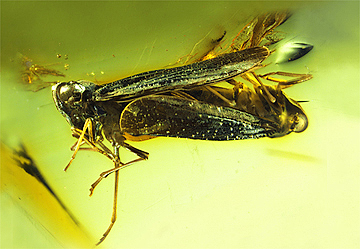Abstract
Palaeoentomology started in the Eighteenth century with published papers on the curiosities of insects preserved in fossil resins, specifically in Baltic amber. The beginning of the Nineteenth century witnessed the first attempts to study and describe insects from sedimentary rocks. This discipline then developed during the latter Nineteenth and early Twentieth centuries, and resulted in some major published works and reviews. The last century was a period of relatively slow but continual development in this field of science. During the past three decades, palaeoentomology has grown significantly and exponentially in parallel to the increasing number of amber outcrops, due to international interest and the growth of scientific awareness in this subject. There is no doubt that the 1993 blockbuster film “Jurassic Park,” directed by Steven Spielberg, and based on the eponymous novel of Michael Crichton, captured the public imagination with the idea of insects in amber and a fascination with ancient life, and probably was a contributing factor in the quest to find new amber deposits. Prior to this time, interest in amber had been primarily focused on the Caribbean region (the Dominican Republic), and the Baltic countries, although it was recognized that amber occurs in various localities world-wide (Azar et al., 2018).
References
Azar, D., Szwedo, J., Jarzembowski, E., Evenhuis, N. & Diying, H. (2018) “Palaeoentomology”: A modern journal for a science dealing with the past. Palaeoentomology, 1 (1), 1‒2.
https://doi.org/10.11646/palaeoentomology.1.1.1
García, E & Harms, F. (1988) Informe del mapa geológico de la República Dominicana, escala 1:100000. San Juán. Dirección General de Minería, Santo Domingo, 97 pp.
Harms, F. J. (1990) A new occurrence of amber in the Early Miocene of the Dominican Republic. Stuttgart. Beiträge zur Naturkunde, Serie B, 163, 1‒12.
Iturralde-Vinent, M.A. (2001) Geology of the amber-bearing deposits of the Greater Antilles. Caribbean Journal of Science, 37, 141‒167.
Lengweiler, W. (1939) Minerals in the Dominican Republic-Amber. Rocks and Minerals, 14 (7), 212‒213.
Vaughan, T.W., Cooke, W., Condit, D.D., Woodring, W.P. & Calkins, F.C. (1922) A geological reconnaissance of Dominican Republic. Servicio Geológico de la República Dominicana, 1, 302 pp.

